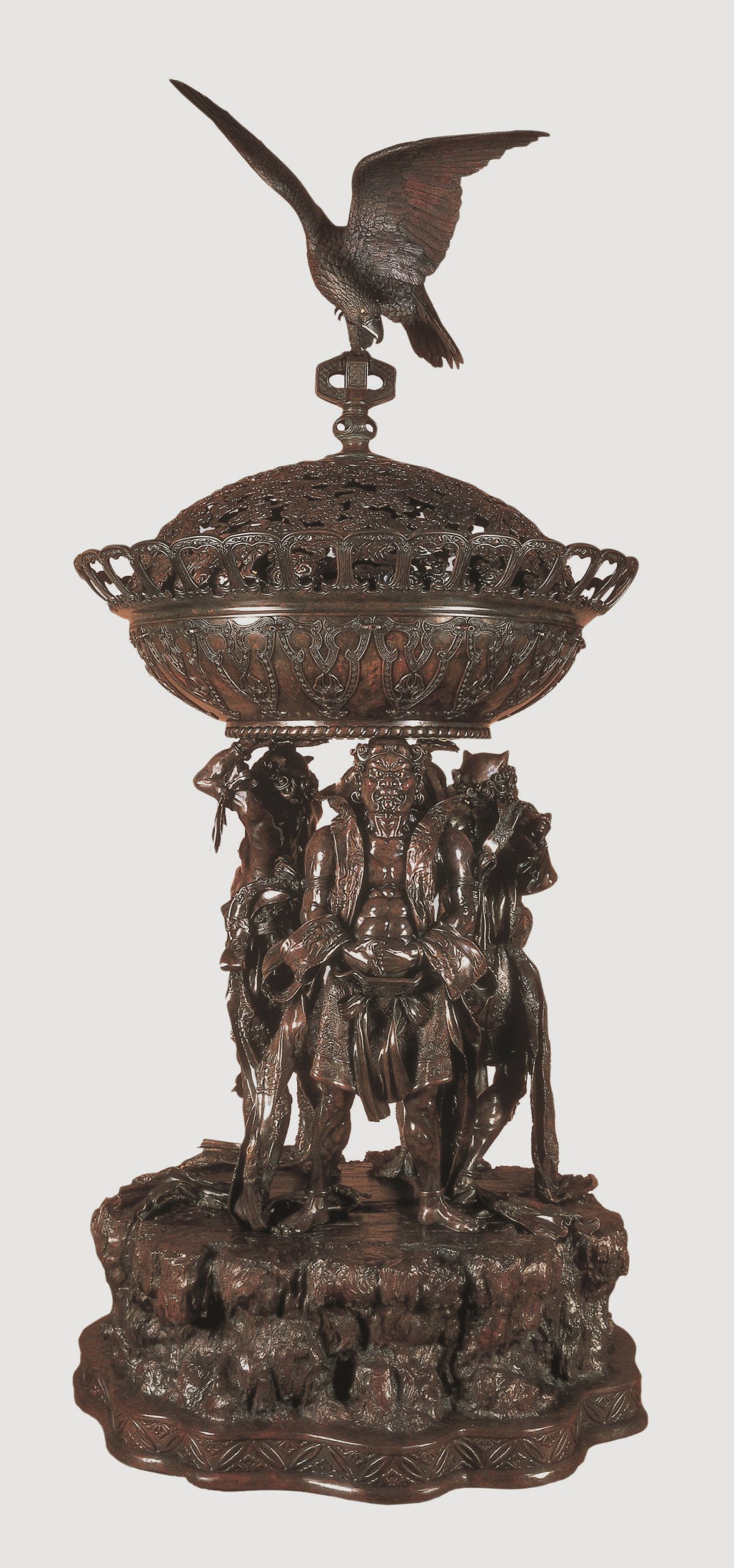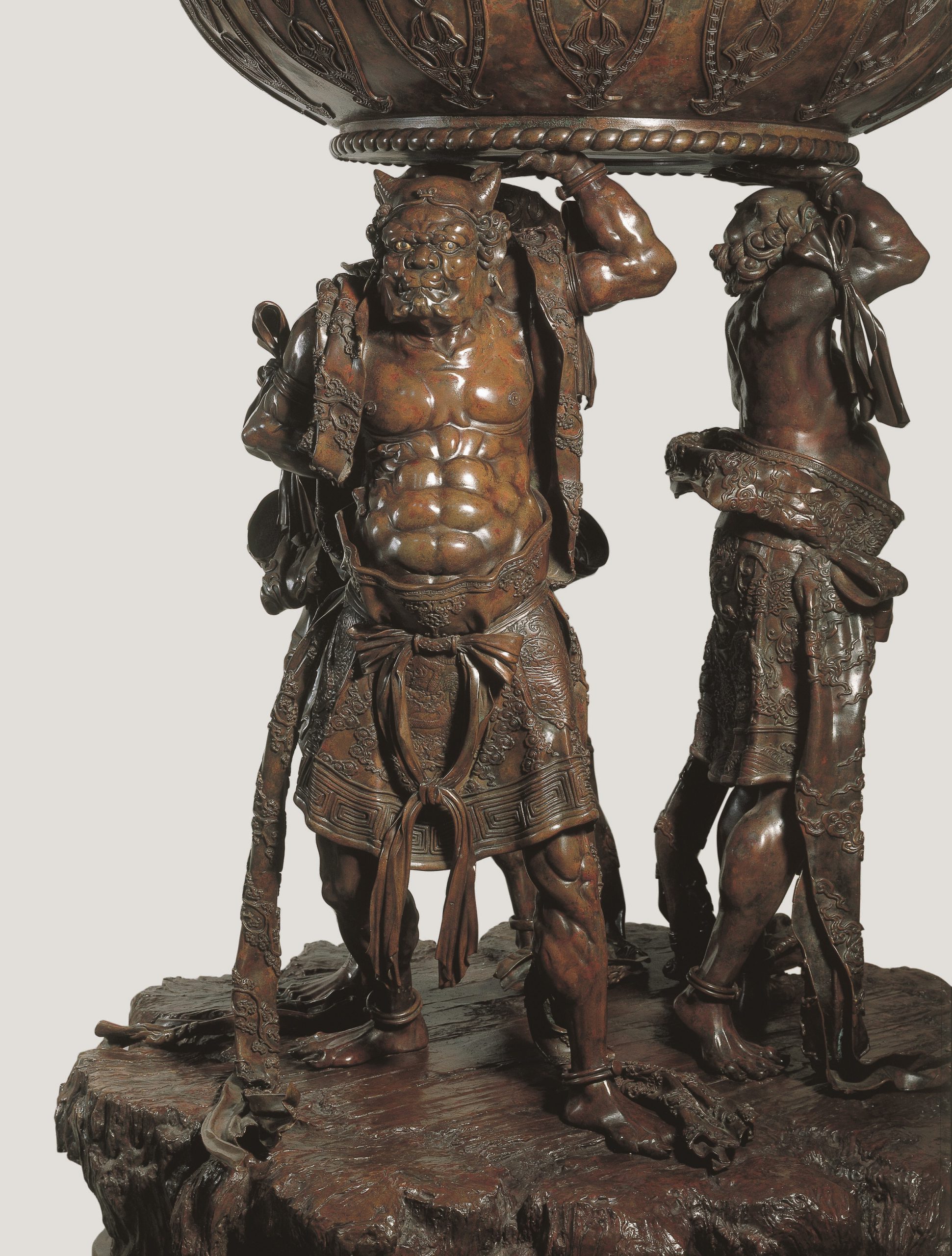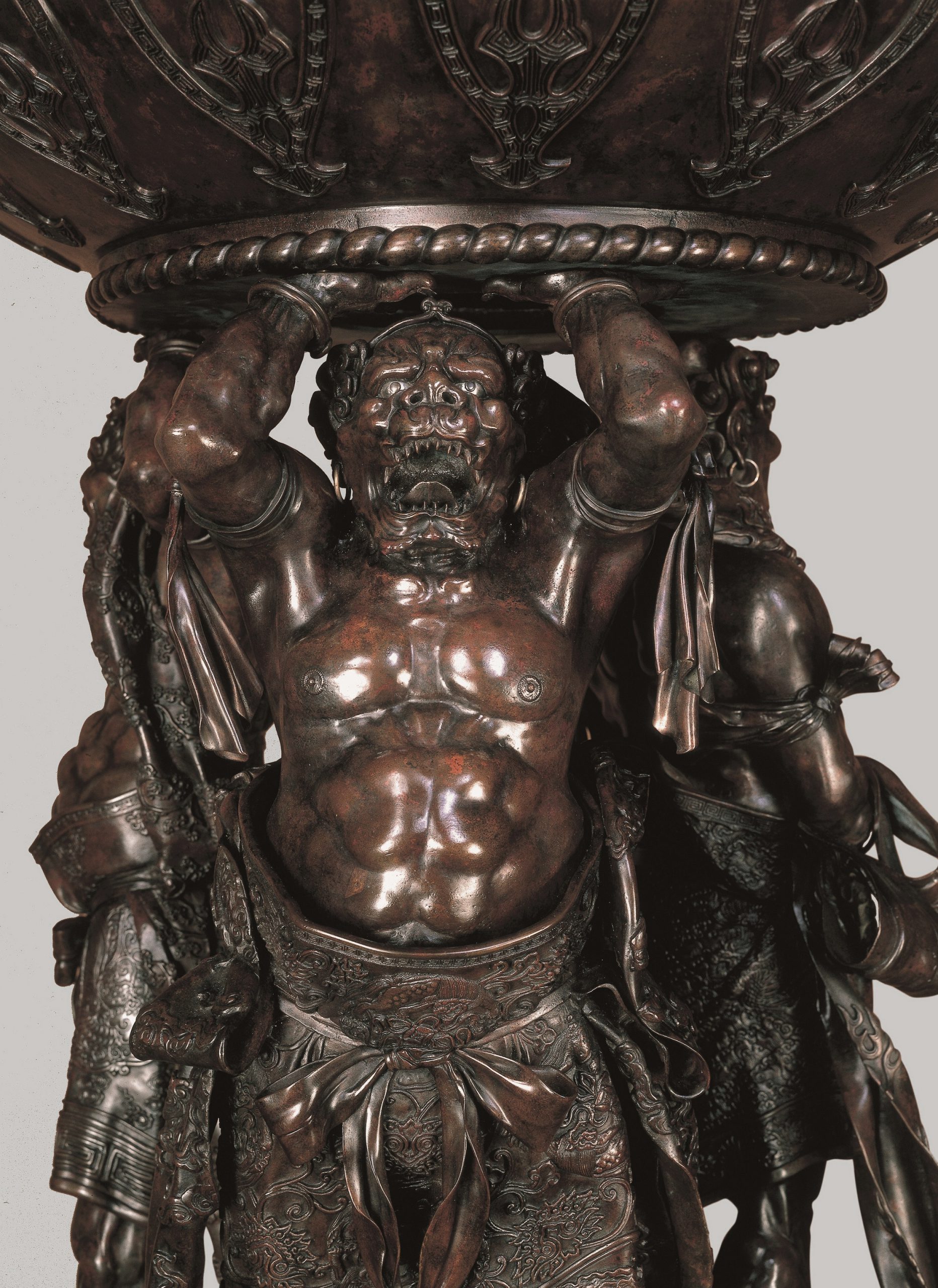 Print Page
Print Page
 Print Page
Print Page
Location: Japan
Materials: bronze and gilt
Dimensions: 280 x 130 cm
Accession Number: M 62
Other Notes:
A massive bronze koro and cover with a large eagle on the finial, the bowl supported by three muscular demons standing on a rockwork base. The eagle with spread wings and downward-looking head, resting on a double openwork finial on the koro lid pierced with could-work, and with an openwork upturned rim. The bowl with raised formal strapwork. The three demons partially clothed holding the bowl over their heads with raised arms or with one raised arm or on the head. The eyes and bangles to the ears gilt. One demon horned and each with a ferocious expression. Their feet resting on an irregular tall rocky base, the foot-rim with a raised half-cash pattern.
This remarkable bronze was presented to the Kunstgewerbemuseum, Berlin, in 1886 by a Dr Emil Riebeck of Halle, when it was thought to date from the early nineteenth century. This clearly implies that it had not been purchased from the Nuremberg Metalworks Exhibition of 1885, but had been in Europe from an earlier date; although it bears all the hallmarks of an exhibition piece, we have been unable to trace it further back. The Kunstgewerbemuseum ceased collecting East Asian art shortly after this time and the greater part of the collection was transferred to the Völkerkundemuseum; the koro, however, remained behind, though it was not on display. It was fortunate to survive the Second World War, when so many other metal objects went to the melting-pot. In 1946, under somewhat obscure circumstances, it passed from the museum into the hands of a D. H. Matthias, a restorer, possibly in exchange for services rendered – a source of some embarrassment to the museum today.
Suzuki Chokichi (1848-1919), who used the go Kako, was one of the foremost bronze-casters of the Meiji period. After working independently, in 1874 he became director of the metalworking department of the government-sponsored Kiritsu Kosho Kaisha (see also M 143). Among his greatest works are the vast bronzes for the international exhibitions in Vienna (1873), Philadelphia (1876), and Paris (1878) – the latter piece bought for £1,586. 7s. 2d. by the Victoria and Albert Museum from the Paris dealer Siegfried (Samuel) Bing in 1881. He also made a great bronze lantern for the Yasukuni shrine in 1880, and a fountain for the Second National Industrial Exposition held in Tokyo in 1881.
After the closure of the Kiritsu Kosho Kaisha in 1891, Chokicki continued to work in the same style. Perhaps his most famous work, now in the Crafts Gallery of the Tokyo National Museum of Modern Art, was the set of twelve bronze falcons commissioned by Hayashi Tadamasa and exhibited at the World’s Columbian Exposition in Chicago in 1893. In 1896 he was appointed teishitsu gigeiin (Imperial Court Artist).
Undoubtedly this incense-burner was made for a great exhibition, but it has not proved possible to identify which.
Bibliography:
O. Impey, M. Fairley (eds.), Meiji No Takara: Treasures Of Imperial Japan: Metalwork Vol I, London 1995, cat. 1.
J. Earle, Splendors of Imperial Japan: Arts of the Meiji period from the Khalili Collection, London 2002, cat. 4, pp. 42–3.


